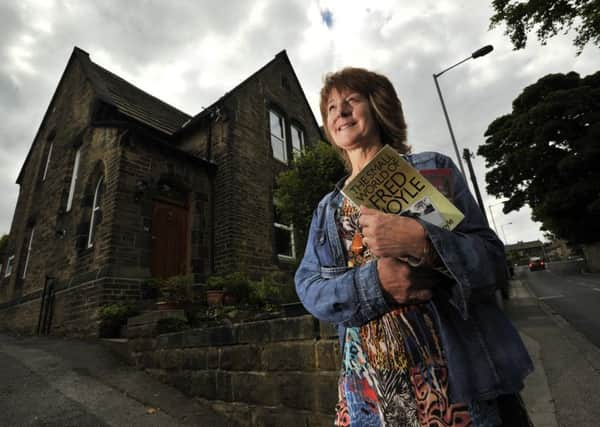Campaign to honour pioneering scientist and writer


And today will mark the 100th anniversary of Sir Fred Hoyle, one of Yorkshire’s most remarkable sons but who for many remains a largely unknown name.
Part of the Bingley bypass does bear Sir Fred’s name, but there is precious little to recognise the impact of a pioneering astronomer who coined the phrase “Big Bang” – pejoratively – for the theory of the origins of the universe and whose talents extended to science fiction which helped launch the career of actress Julie Christie.
Advertisement
Hide AdAdvertisement
Hide AdIt is a situation being tackled by a group of Bingley residents, supported by the town’s civic trust, who want a greater celebration of Sir Fred’s achievements.
“I think his life encapsulates a fascinating bit of local history – he was a genius if you read what he did,” says Ruth Leman, one of the locals behind the Bingley Fred Hoyle Project.
But although he was born in Gilstead, just outside Bingley, and went to Bingley Grammar School, the group have found that few people in the area knew who Sir Fred was.
“We did a little test of who had heard of him – people knew there was a Fred Hoyle bypass but didn’t know who he was. Some of the older generation did know of him from reading the books he wrote,” Ms Leman said.
Advertisement
Hide AdAdvertisement
Hide AdOne of Sir Fred’s science fiction works – A for Andromeda – was made into a 1961 BBC TV series which included a first starring role for Julie Christie.
But it is his work as a scientist which is most revered. After leaving Bingley Grammar, he went on to Cambridge University and in the 1940 and 1950s advanced groundbreaking theories on nucleosynthesis, which explained how hydrogen powered the sun.
In the 1960s he was one of the founders of what became the prestigious Cambridge Institute of Astronomy and he was also well-known for going against scientific orthodoxy. Most famously, his dismissal in 1949 of the then new theory of the origin of the universe as the “Big Bang” was picked up by his opponents and ultimately became common parlance.
John Baruch, the director of robotic telescopes at Bradford University and who is helping the local project, said: “This new theory came out and he asked where the energy came from for the initial explosion. He said it meant you had to suspend a belief in physics and sciences for the first few seconds and then start following it again. He was very disparaging about it, called it the Big Bang theory and it stuck.”
Advertisement
Hide AdAdvertisement
Hide AdSir Fred instead expounded his theory the universe did not have a beginning and existed in a “steady state”. It had to have been influenced from the outside for it to be created – a theory akin to that today described as “intelligent design”.
In the 1980s, he developed a theory – panspermia – that life must have been created with help from space via cells brought to earth by comets. That theory is now being revisited through the work of the European Space Agency Rosetta probe on Comet 67P which is looking for evidence of life’s basic building blocks.
A public lecture is to be held at Bingley Grammar in the autumn and there are hopes a statue of Sir Fred, who died in 2001, will be erected in the town. More information is available at [email protected] or the Bingley Fred Hoyle Centenary Project page on Facebook.
COMET MISSION TO BE EXTENDED
A EUROPEAN space mission that made history by carrying out the first soft landing on a comet is to be extended by almost a year, it has been confirmed.
Advertisement
Hide AdAdvertisement
Hide AdThe Rosetta mission was originally funded until the end of December this year, but the European Space Agency has now given formal permission for it to continue for a further nine months.
A dramatic end to the mission is planned for the end of September 2016, with the Rosetta spacecraft being dropped from orbit onto the surface of comet 67P/Churyumov-Gerasimenko.
The decision follows the announcement by scientists that the probe’s lander, Philae, was up and running again after being forced into hibernation.